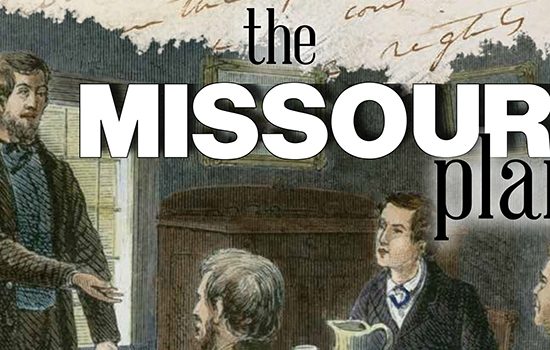
One hundred years ago, a bold experiment died. But it could be more than a historical footnote; it should serve as a prophetic whisper that things are not as they should be. I’m talking about the “Missouri Plan,” an experiment in cooperation among Baptists after the Civil War.

Brian Kaylor
Let’s first set the stage. Baptists split in 1845, allowing the man-made Mason-Dixon line to trump the baptismal waters. This separation over the issue of slavery not only foreshadowed the coming national split and Civil War in 1861, it actually helped it occur. By tearing apart, Baptists made it more likely the nation would splinter.
Baptists in Missouri, a slaveholding state, didn’t attend the original meeting of the Southern Baptist Convention in 1845. But the state convention did join the Southern faction the next year. With many Baptist pastors and leaders in the state condoning slavery — and even enslaving people themselves — it was not a surprise. However, as a border state with passionate debates surrounding the issue, some Baptists in Missouri opposed slavery and supported the Union during the Civil War. Thus, those Baptists started an alternative convention at the close of the Civil War to align with Northern Baptists (today known as American Baptist Churches USA).
Two conventions seemed quite natural for a divided state. After all, Missouri even had two competing governors during the War! The governor elected on the eve of the fighting wanted to join the Confederacy, but the state legislators stopped him. So, he fled to Arkansas where he claimed to still rule in exile. When he died there, his lieutenant governor claimed the mantle of Confederate governor.

Image by Sharky from Pixabay
Meanwhile, once those two men had fled the state, the pro-Union members of the state’s Constitutional Convention elected a new governor. When he died before the war ended, his appointed lieutenant governor assumed the office. And if that’s not confusing enough, portraits of all four men hang in the Capitol in the hall of governors.
After the fighting ended and the nation — not to mention the state — came back together under one government, Baptists remained divided. The Baptists in the newer convention aligned with the North decided to disband in 1867 and join the older convention in hopes of bringing reconciliation. Two years later, the lone state convention voted to end its status as an auxiliary of the SBC.
This started a period of a couple of decades of Baptists in Missouri thinking about how to cross that line still dividing Baptists nationally. They decided to be neither Southern nor Northern. Instead, they sought to just be Baptist — some might even say they sought how to be “Baptist Without An Adjective.”
In 1887, Missouri Baptists passed a resolution lamenting the continuing national divide with competing mission boards despite “there being no difference of faith or doctrine existing to cause this separation.” They appointed a group to try and bring unification. They followed this in 1889 with a unified giving plan dubbed the Missouri Plan” as a way to bring Baptists back together.
E. W. Stephens, a Baptist leader at the time, reflected on the Missouri Plan in a report the next year. He praised Missouri Baptists for putting aside “the spirit of sectionalism” that previously “menaced harmony and prosperity.”
“The Missouri Plan has attracted the attention of the country, and its success may yet effect an innovation in missionary methods, North and South. The most gratifying experience has been the favor with which it has been received by churches,” he said. “[The Missouri Plan] means a unification of our missionary work, a closer sympathy between the churches, a burial of sectional bitterness, and an undoubted impetus to the mission cause.”
Stephens later credited the plan with increased mission contributions and for having “established a unity and brotherliness that have excited the admiration of the entire land and exercised an influence far beyond the borders of Missouri.”
Alas, it would not be. The Missouri Plan ended in 1915 and the state convention decided to return to singularly aligning with the SBC in 1919. And with that, a half-century experiment in Baptist cooperation died.
But maybe that vision continues today. Perhaps Baptists can find life again in those dry bones. Maybe Baptists today could find ways to cross the denominational, ethnic, national, and ideological lines that too often divide us. Let’s dream that dream together, and have the faith to turn our dreams into deeds.
Brian Kaylor is editor & president of Word&Way.

